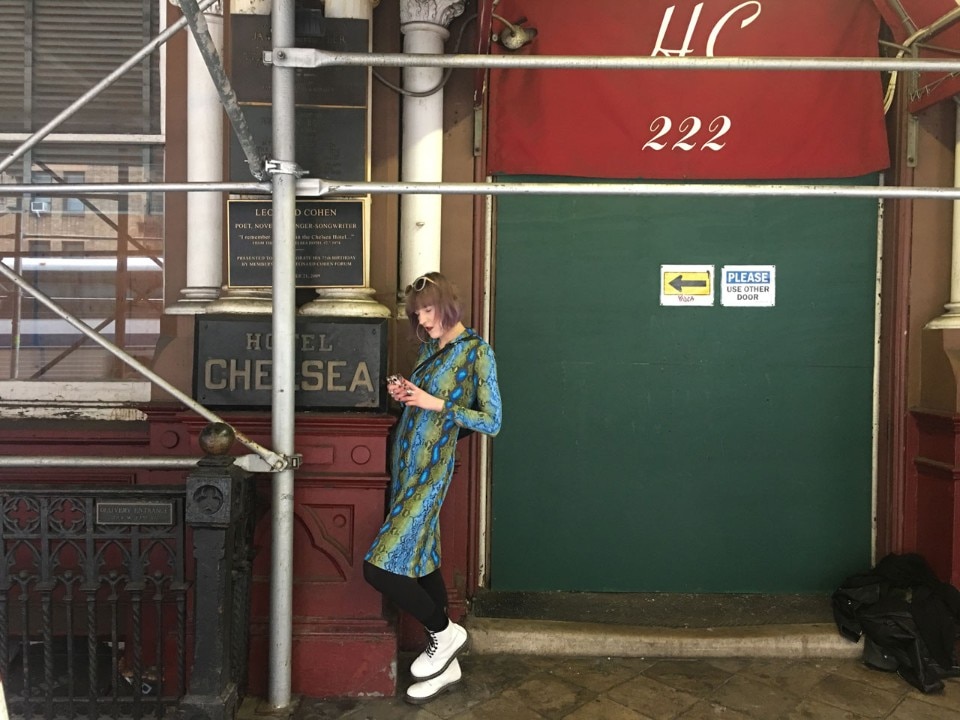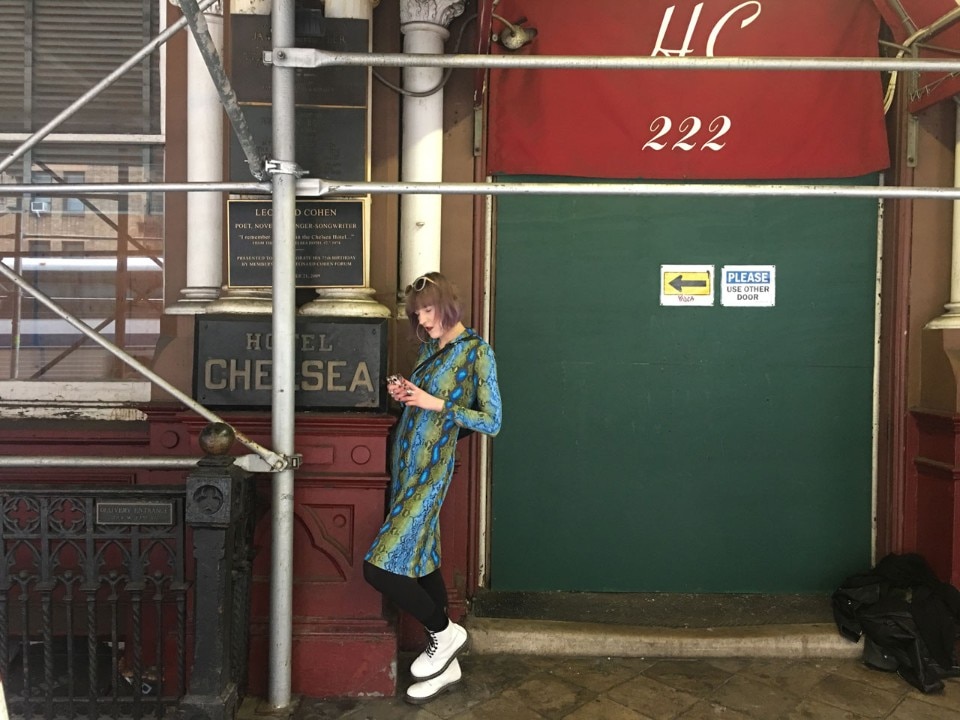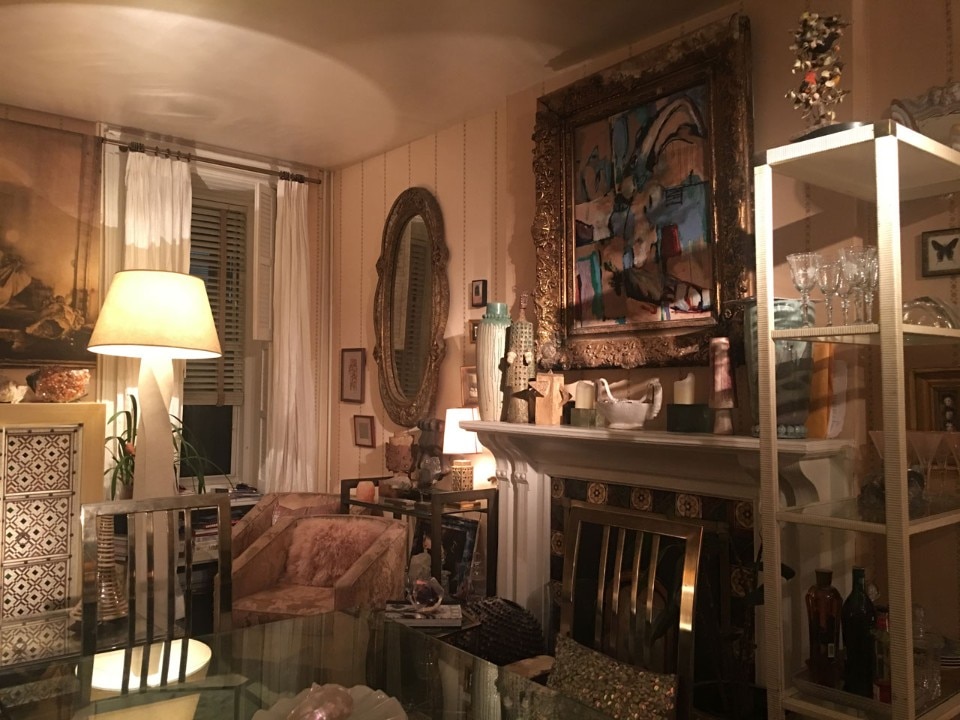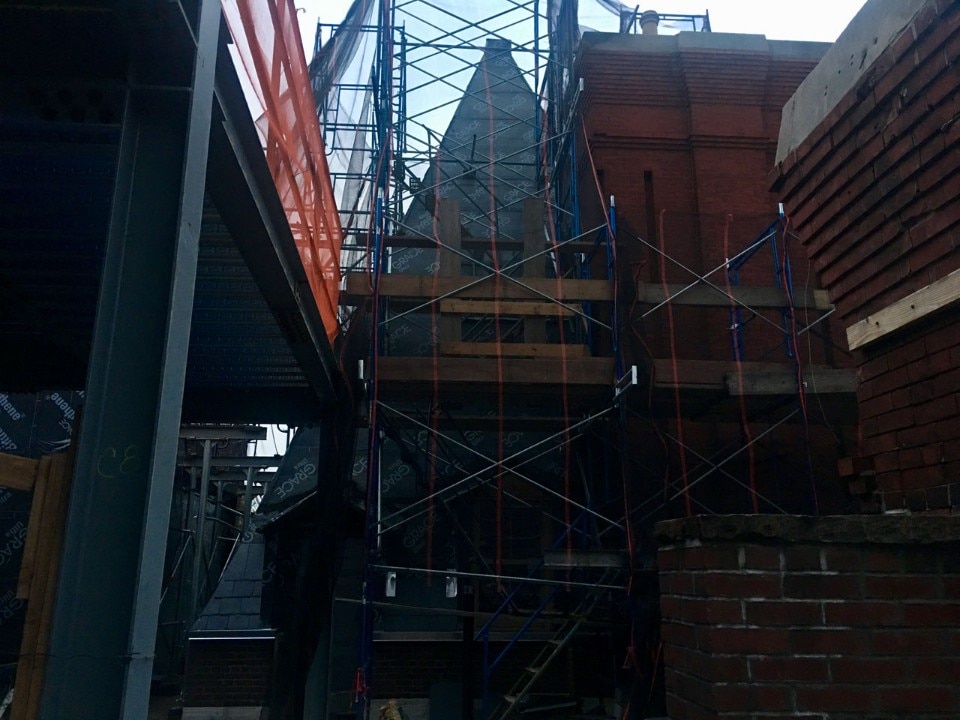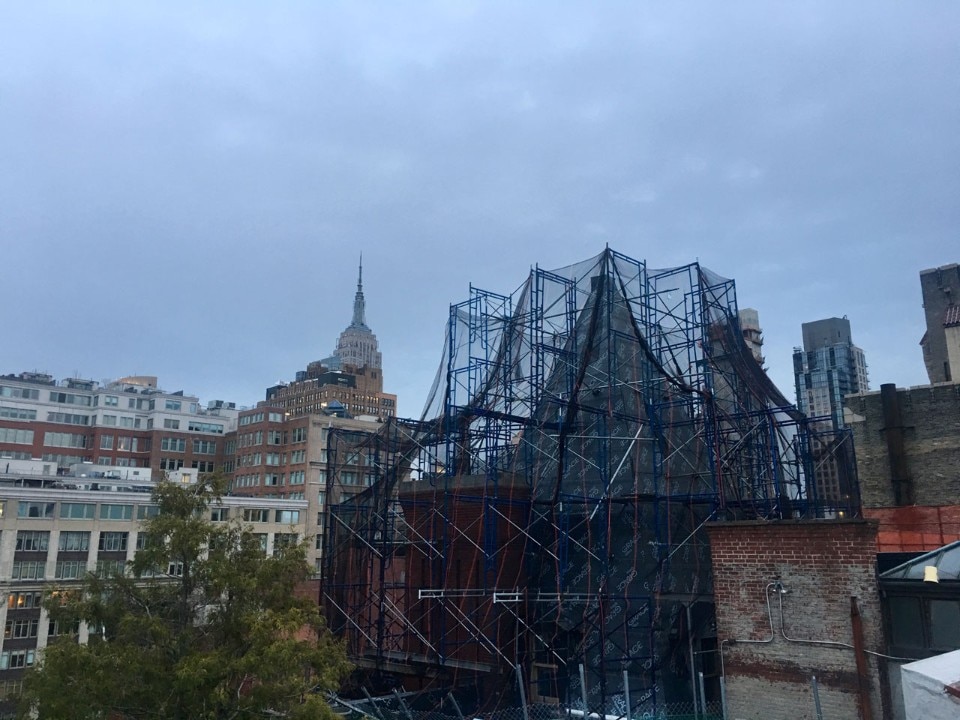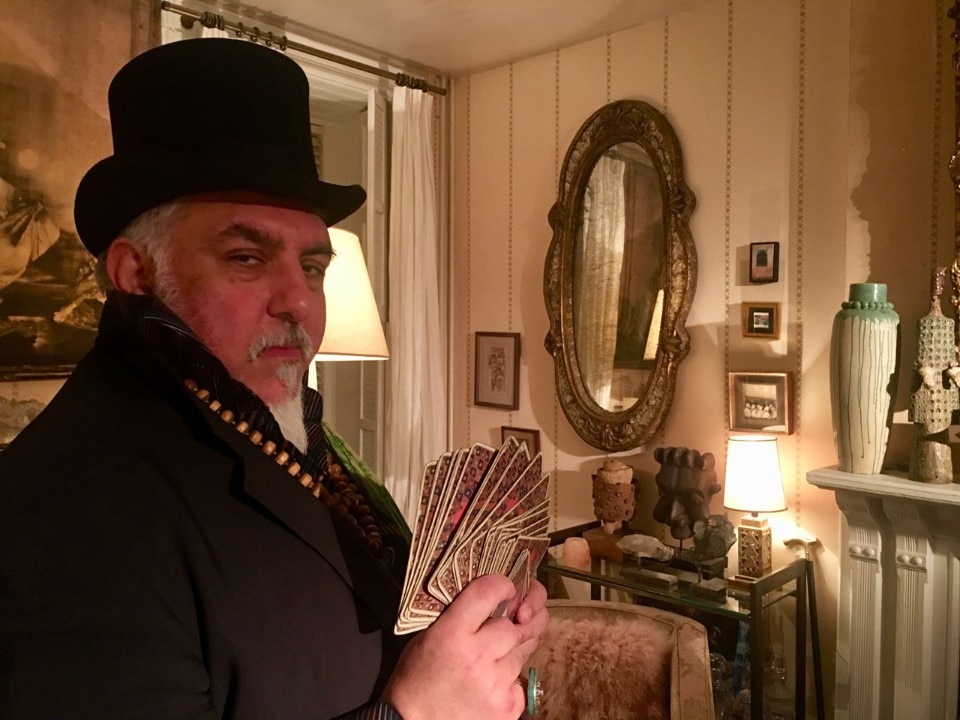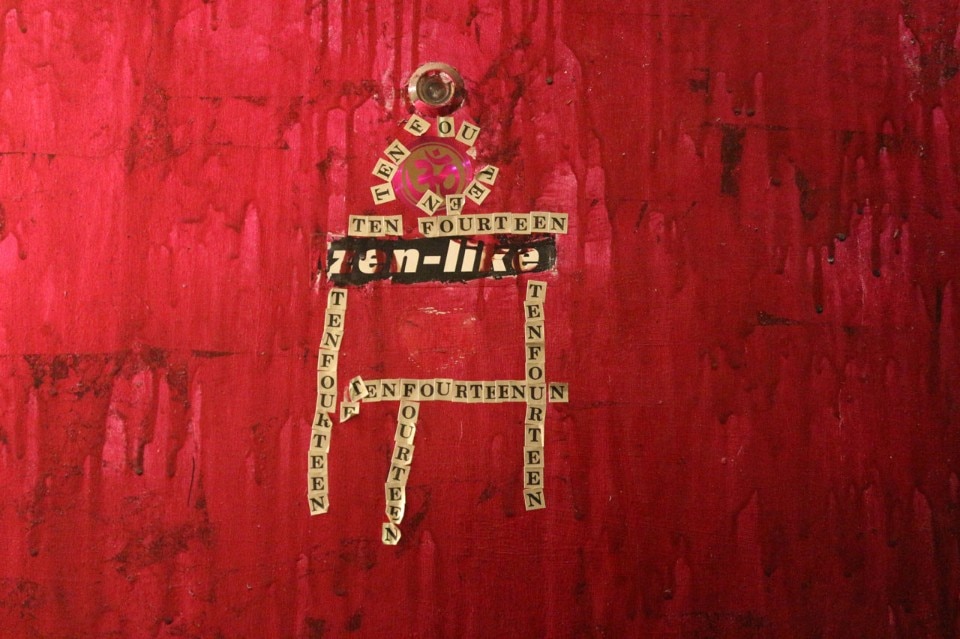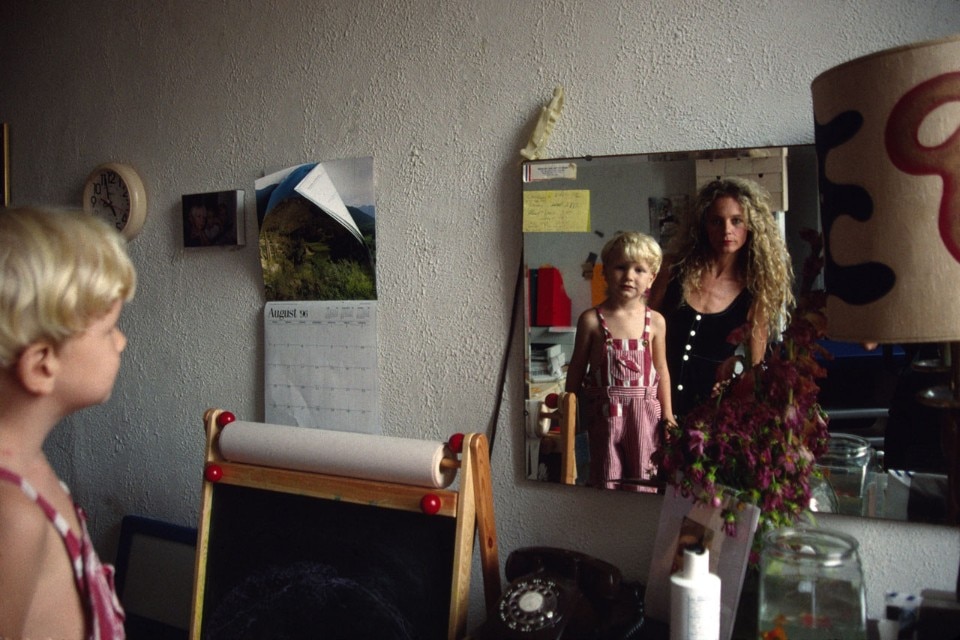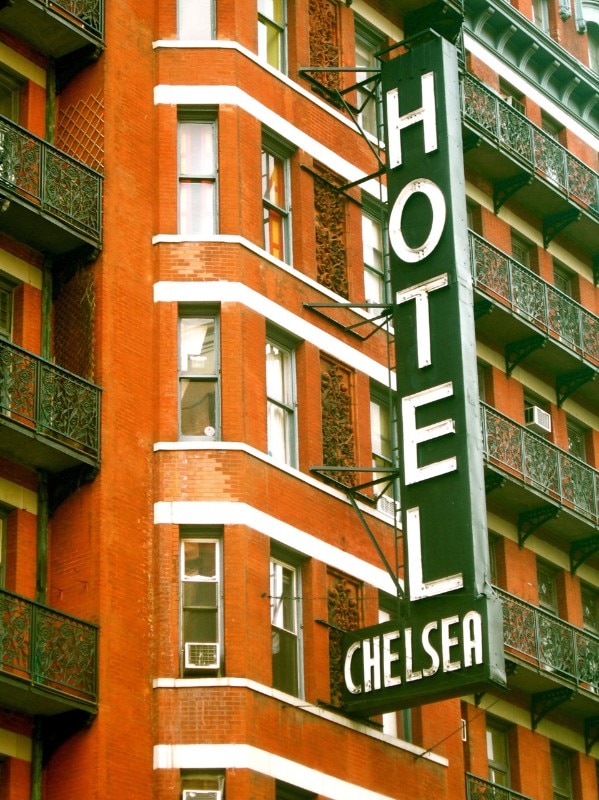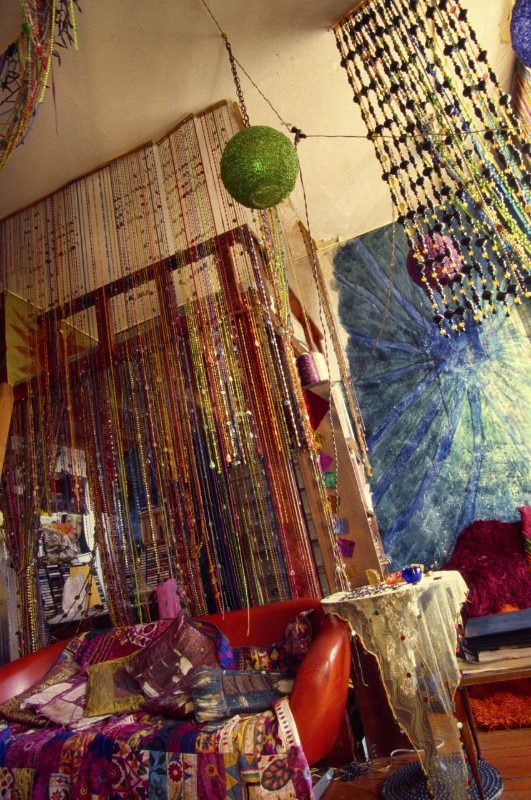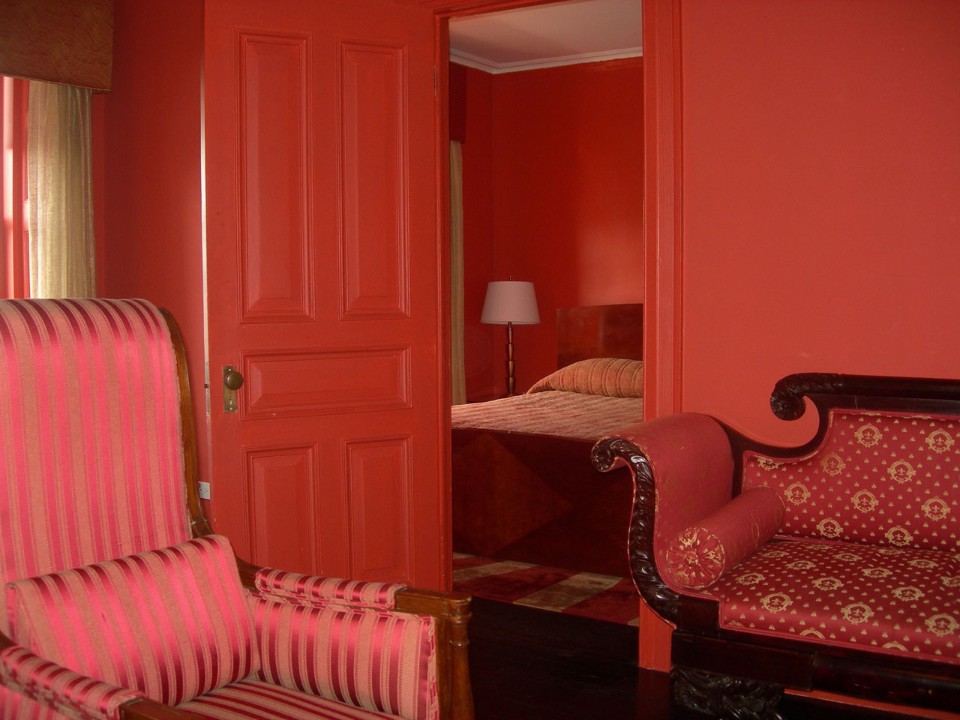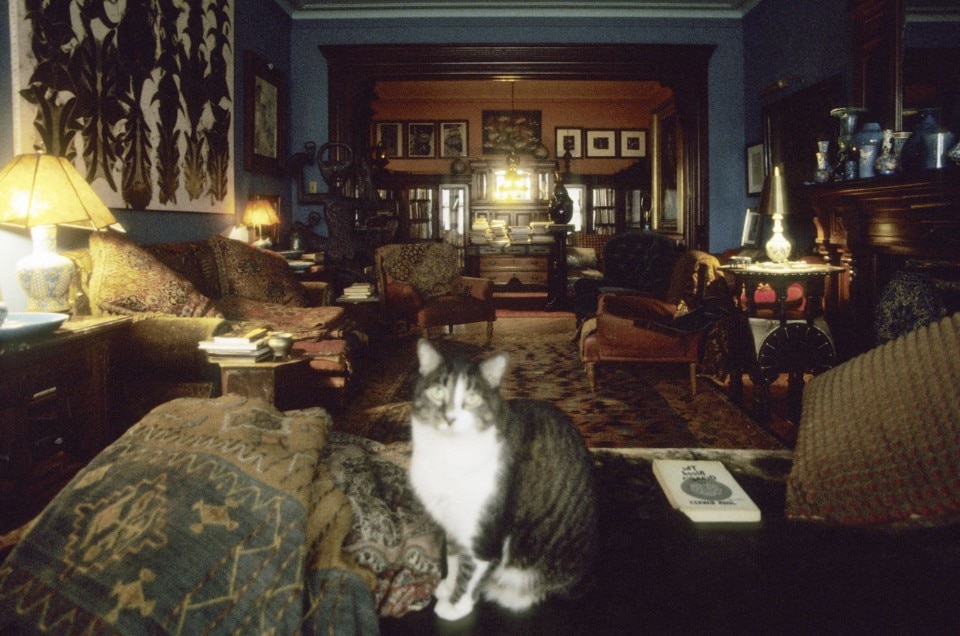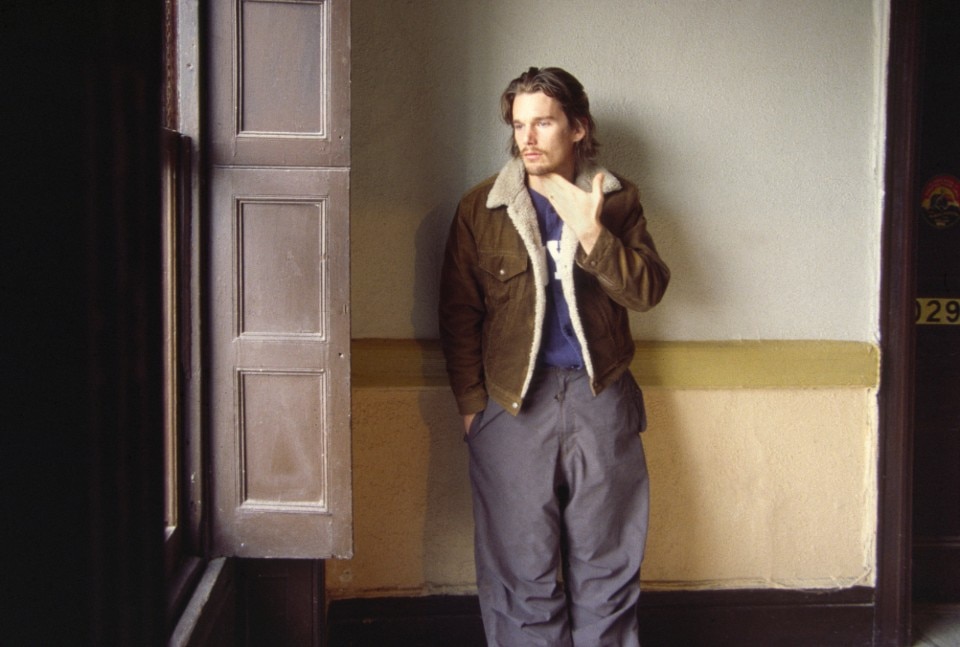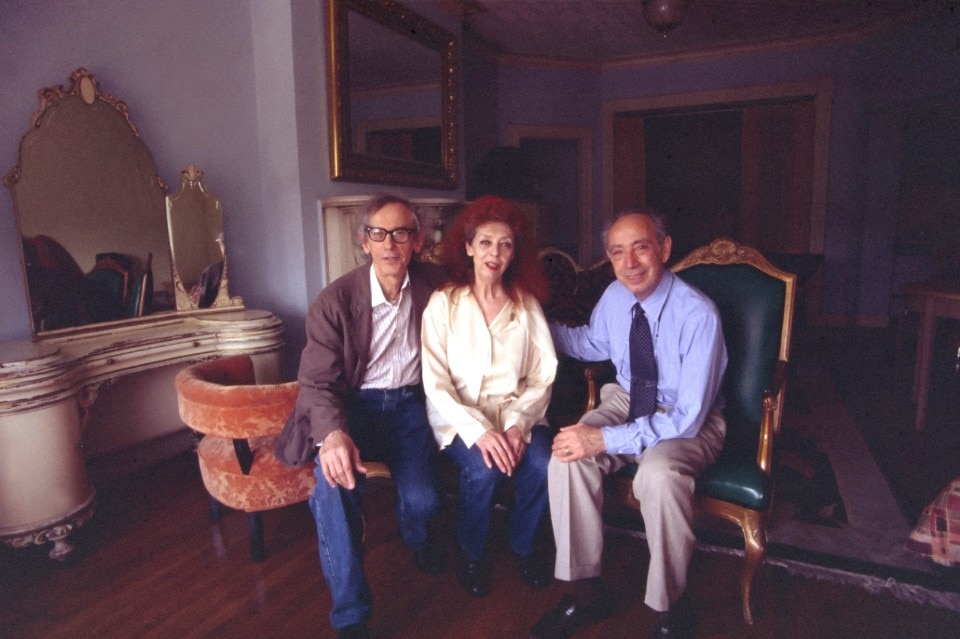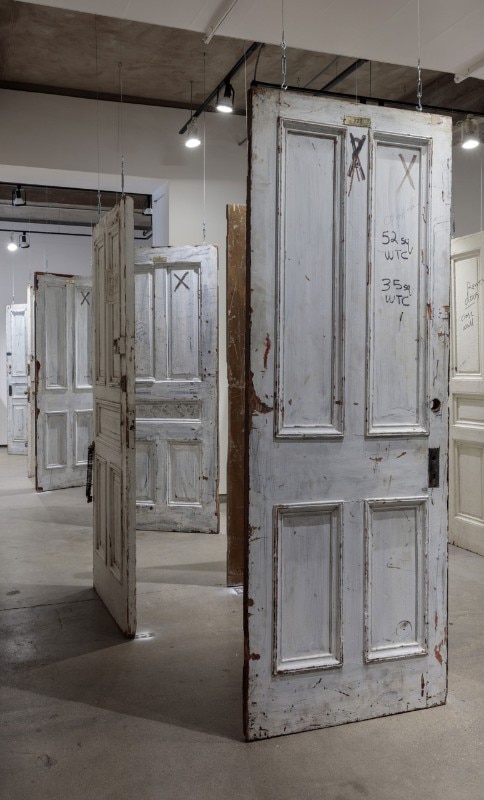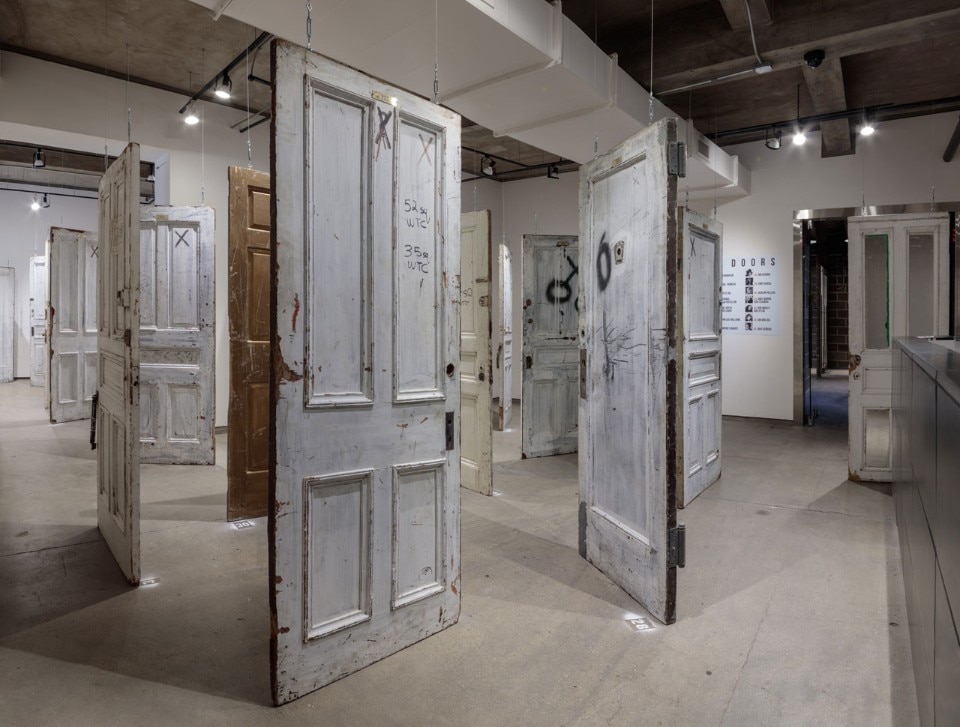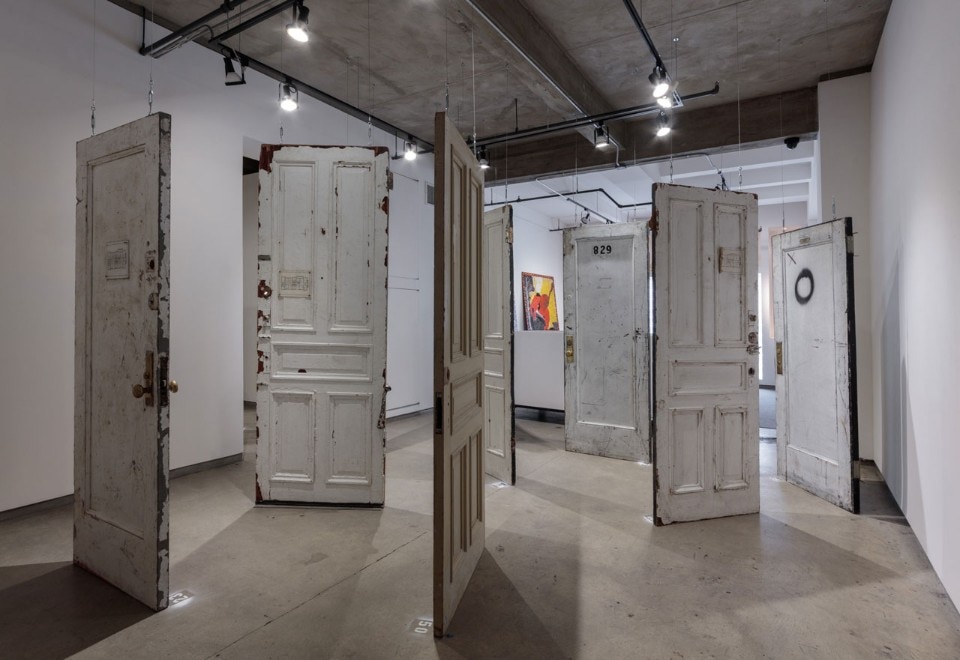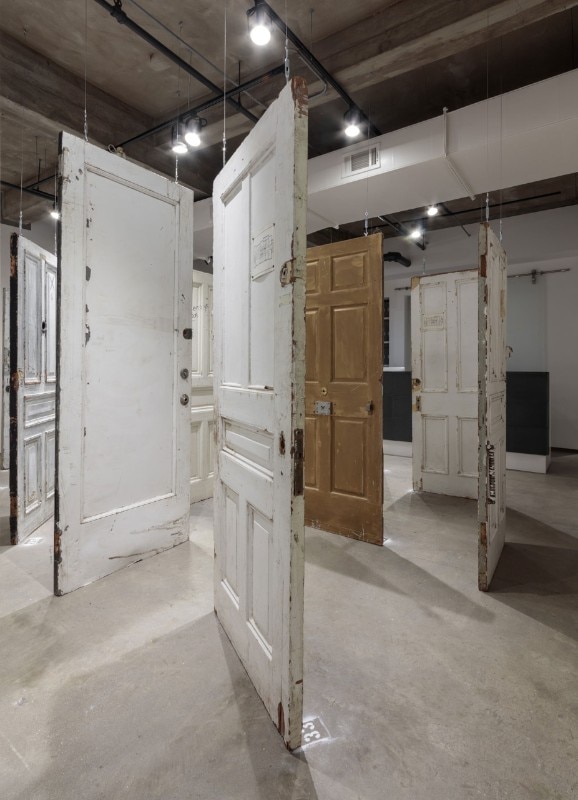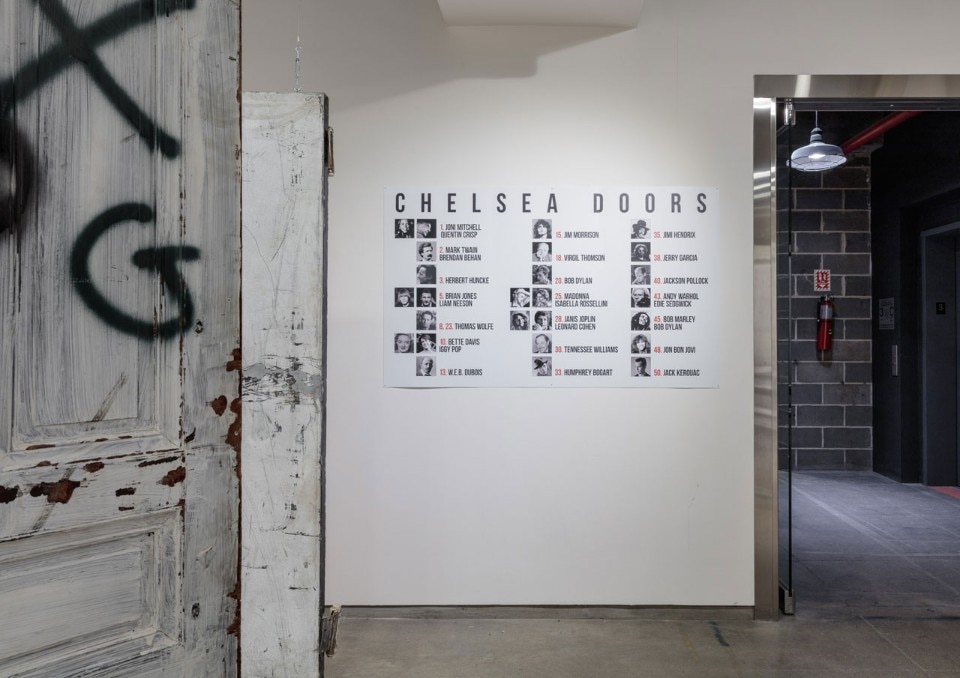The Chelsea Hotel's neon sign is off. Since 2011, the red velvet coloured facade, with its flower-patterned balconies, white columns and sloping slate roofs, has been covered by scaffolding. The entrance at number 222, 23rd Street is blocked off, the 250 units are sealed with tape from the outside while the elevator is covered with a metallic grey tarpaulin. The rooftop, once with an abundance of trees and flowers, has been transformed into a storage area where industrial materials are now piled up. In the silence of the bare corridors, the ascending wrought-iron staircase is perhaps the only visible piece of history still intact, functioning as a load-bearing pilaster of the building.
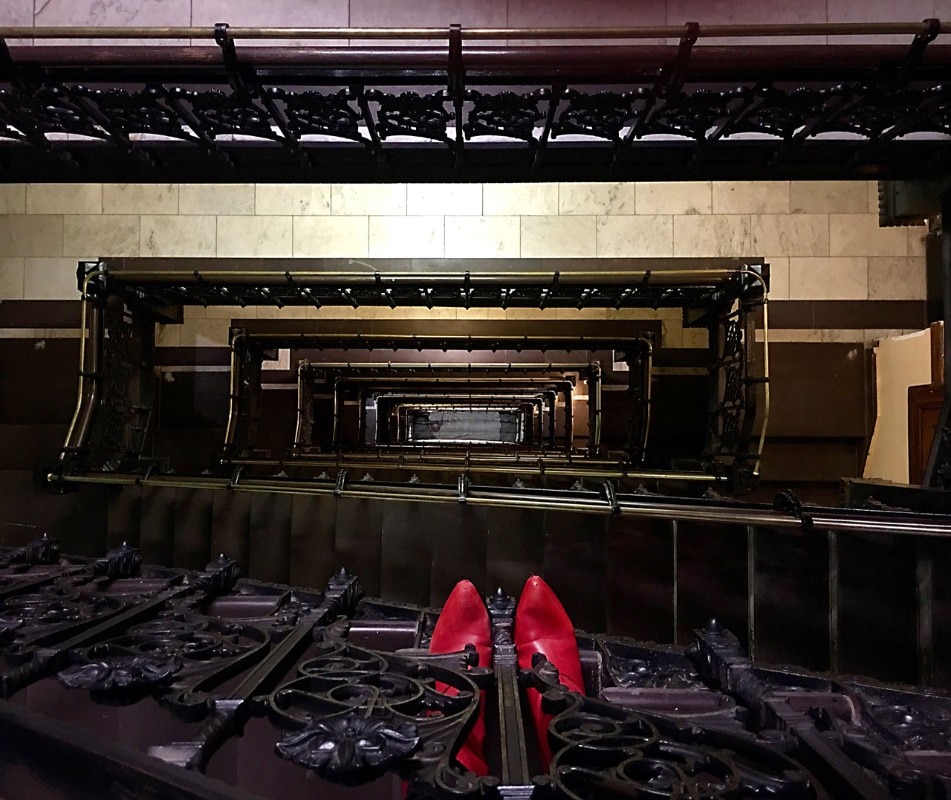
Long gone is the golden age of Stanley Bard, that romantic and instinctive soul who inherited the hotel management from his father in the 1970s and ran the place for over 40 years. It was he who personally chose the residents, ascribing a price for each one and providing shelter for destitute artists who often paid their rent with artworks. Seven years ago the hotel was bought for 81 million dollars by the builder Joseph Chetrit, who suddenly closed it with the excuse of renovations to make it into a super-luxury hotel. “We knew the building was up for sale because we saw the announcement on Internet, but no one told us what was going on nor who had taken over the property,” Colleen Weinstein, wife of the photographer Arthur Weinstein, tells me. She and her daughter are currently living in the hotel in one of the already renovated apartments. “Then, from one day to the next, we found new people, rude and horrible, working at the reception desk and we had to pay our rent to a company called Chelsea Dynasty. They took all the artworks off the walls of the stairway, the corridors and the lobby and they sealed off the empty rooms with enormous padlocks. They painted over the doors to erase history and later they replaced them and threw them away.”
Following legal action on the part of the residents and others, Joseph Chetrit then sold the building for 150 million dollars and, in 2016, a holding of hotel chains – including Richard Born and Ira Drukier of BD Hotels, Sean MacPherson of the Jane Hotel and Bowery Hotel – acquired the property for 250 million dollars in a sale that included El Quijote, the Spanish cuisine restaurant that opened in 1930 to compensate for the lack of kitchens in the Chelsea Hotel units. The eatery, completely decorated with kitsch scenes from the story of Don Quixote, used to be a meeting place for the hotel residents as Patti Smith recalled in her memoir, “The Chelsea was my home and the El Quijote my bar.”
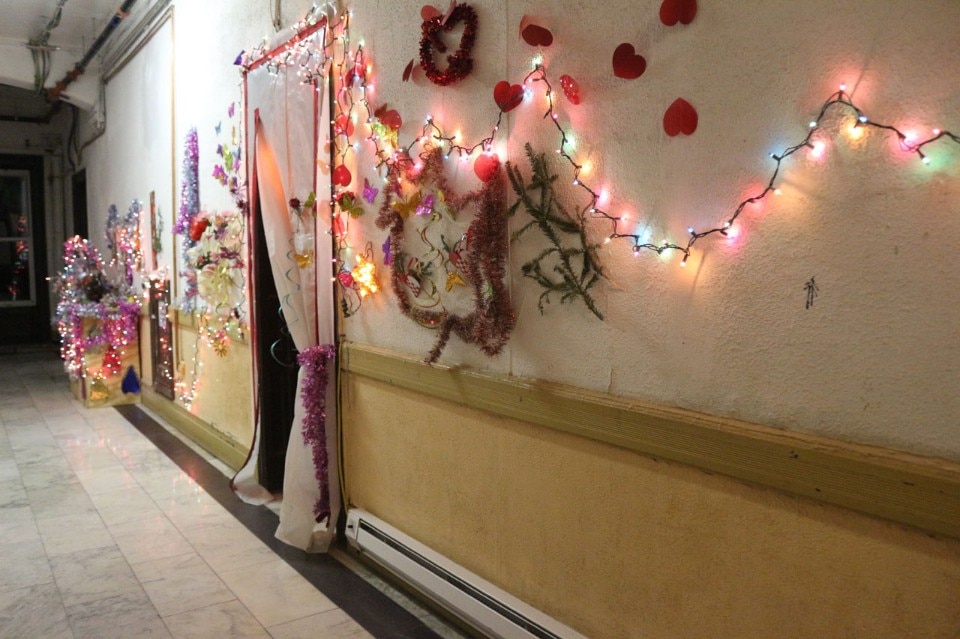
Apparently the Chelsea Hotel's process of decrepitude seemed unstoppable yet, even so, one still feels a vibration upon entering the building. There are some 50 people living there, of whom many are artists.
Tony Notarberardino, for example, is a photographer and film director, who I met several times at the bar in El Quijote drinking a Manhattan cocktail. Tony has lived at the Chelsea for over 25 years and has always been able to keep his sixth-floor apartment intact; it is brightly painted, kaleidoscopic in furnishings, with a nineteenth century fireplace, a giant Buddha and decorations by Australian artist Vali Myers. His “Chelsea Hotel Portraits” project is an elegy to humanity, recounted through black and white photographic portraits taken between 1997 and 2014, all documenting the extraordinarily diverse ways of living inside that building.
I turn to Tony's friend, the professional fortune-teller Gabriel Marchisio in order to be taken to the Weinsteins' apartment. “Once you told me that this place is a portal”, I remind him as we sit on Colleen's sofa. “Bubububuu,” he replies. “It's not a personal opinion, nor a vague idea. It's a fact. Here there is a creative, independent, organic and biological energy. And none of it is gluten-free!” He laughs. We laugh together, Then he adds, in a murmur, “This place is alive.” Colleen declares,“And it's a woman, an old grande dame.”
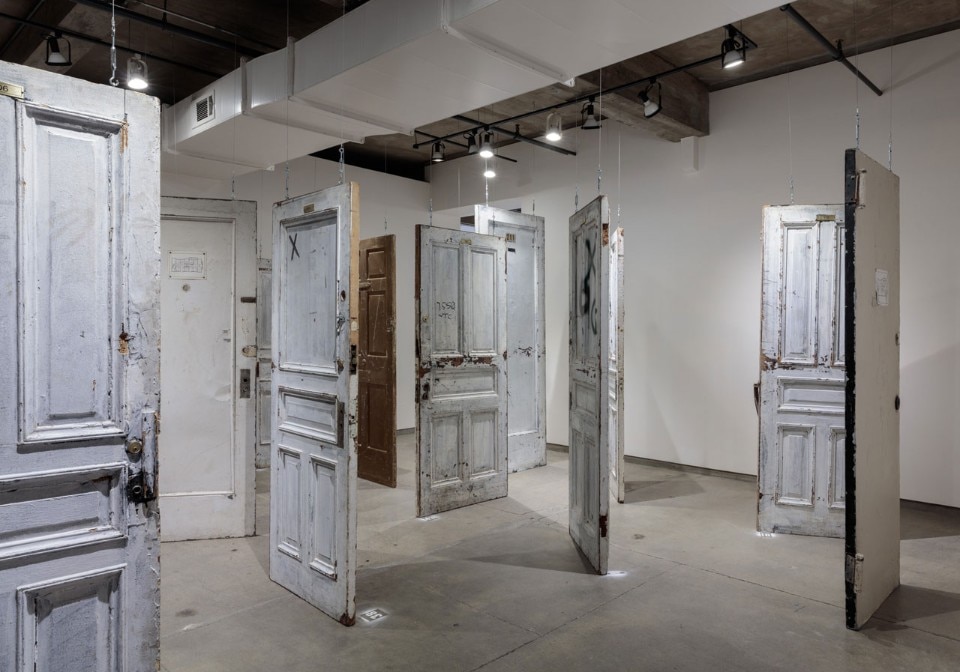
The hotel was built in 1885 in Victorian Gothic style by the architect Philip Hubert, a follower of the proto-socialist ideas of French philosopher Charles Fourier; conceived as an urban utopia, the building was the first low-cost apartment cooperative in New York, a sort of commune to house the people who had built it (electricians, construction workers, interior designers and plumbers) together with writers, musicians and actors. The top floor with its full sunlight was reserved for 15 painters' studios, while the quieter rooms facing towards the interior were given to writers. The paintings were hung on the walls of the common rooms and corridors and the ceilings were decorated with nature motifs. At the time, it was the tallest building in New York.
However, in 1905 Huber's socialist dream went bankrupt and the building was converted into a hotel which, like a magnet, attracted the most brilliant and the most diabolical minds of the 20th century. Here every corner tells a story, every room becomes a microcosm.
Mark Twain and Oscar Wilde lived here and this is where Jack Kerouac wrote On the Road in 1951. After his divorce from Marilyn Monroe, Arthur Miller moved into room 614, where he lived for six years. Bob Dylan lived at number 211, married the woman in the room next to his and recorded the song Sara. Leonard Cohen met Janis Joplin in the elevator and wrote Chelsea Hotel #2 for her. Arthur C. Clarke wrote 2001: A Space Odyssey here, William S. Burroughs The Naked Lunch, while Andy Warhol filmed Chelsea Girl here. Sid Vicious stabbed his girlfriend Nancy Spungen in the heart and she died in room number 100. Jimi Hendrix, Jim Morrison and Janis Joplin held their parties here. And the complete list would be long indeed.
Conceived as an urban utopia, the building was the first low-cost apartment cooperative in New York, a sort of commune to house the people who had built it (electricians, construction workers, interior designers and plumbers) together with writers, musicians and actors.
Over the years, an aura of mythology has eaten away at the Chelsea Hotel's fame, making it fall prey to American real estate speculation. Is this a script that's repeating itself?
Many people think that the building will become a tourist attraction in spite of the current owner's attempts to make the building usable, with hotel rooms and apartments, without completely changing its structure. According to Marchisio who, before the 2011 closure, used to read the Tarot cards for a group of residents and friends, the Chelsea continues to have an uphill climb. “It's not a problem of disagreement among the owners, however there are all kind of forces working against its reopening plus financial interests opposed to its recognition as an historical landmark. At the end of it all, it will go back to being a place for creative people albeit in a changed way from the past. And there will be two restaurants.
Meantime two recent dates marked another passage in the hotel's history. On 30 March El Quijote closed, giving as the motivation an interior renovation due to open in six months' time. Many New Yorkers, sceptical of its future, flocked to the restaurant in spite of the hours' wait for a table. Instead on Thursday, 12 April, Guernsey's ha sold 55 original doors at auction, the same ones that had been whitewashed by Joseph Chetrit's workers, thrown away but picked up in the street by Jim Georgiou, a homeless man who had been a resident of the Chelsea for some time. The highest offer, 100,000 dollars, went for the bedroom door of Bob Dylan's place, followed, at 85,000 dollars by the doors formerly used by Janis Joplin, Leonard Cohen and Joni Mitchell; the lowest prices commanded, ranging from 1,000/1,300 dollars, went for the doors that didn't have any direct connection to celebrities. The profit of the sales will be donated to City Harvest, the non-profit organisation that picks up food from restaurants and food chains to re-distribute it among needy people. For a week before the auction, the doors were on view all together, held in standing position by wires hung from the ceiling of the Ricca Maresca Gallery, host of the event.
Symbols of communication or of division, open or shut tight, the doors usually don't impede anyone but here, each one's fascination was irresistible. They doors are palpable presences, dressed in white, ready to slip away towards new directions.


